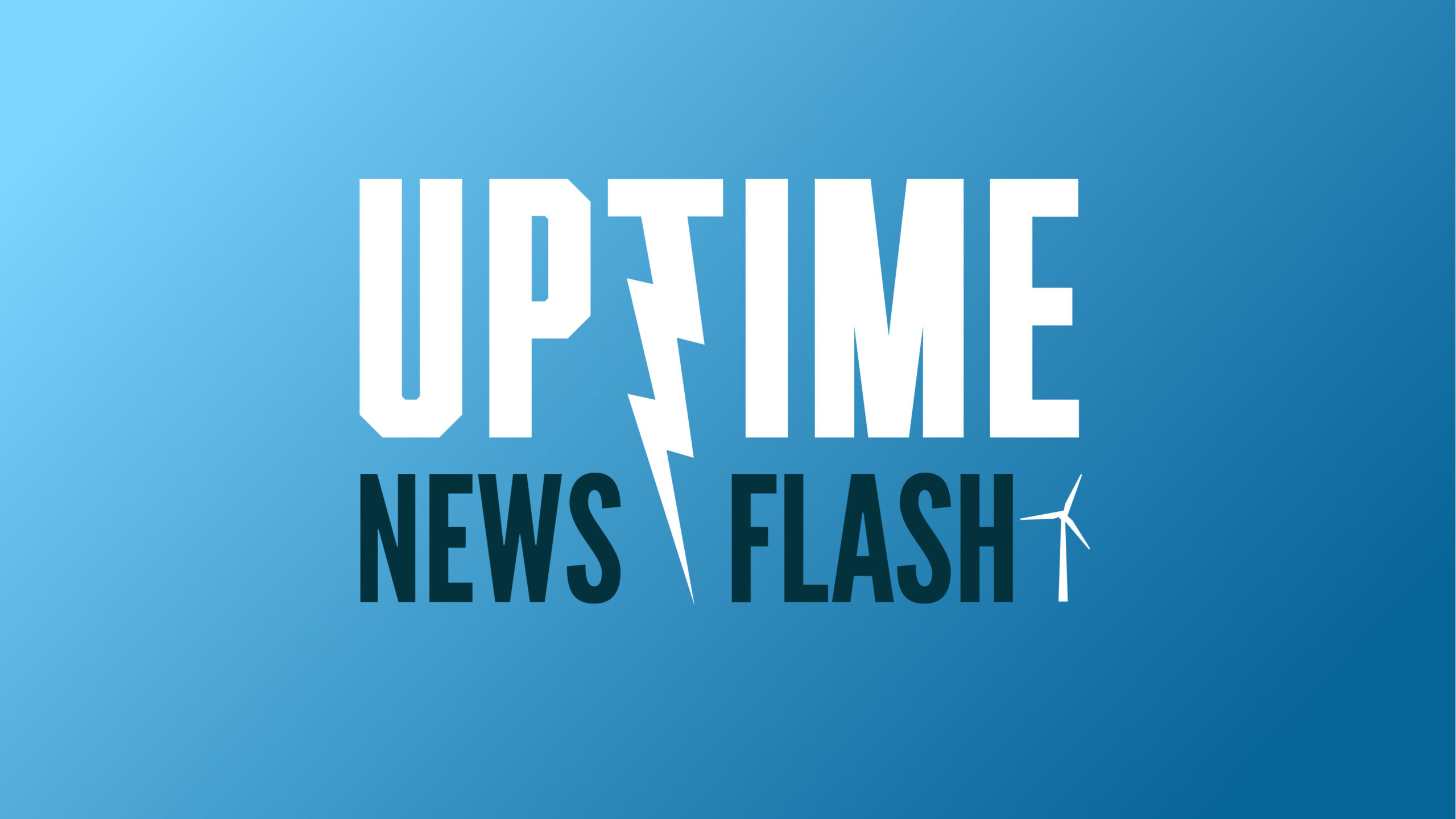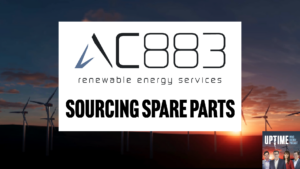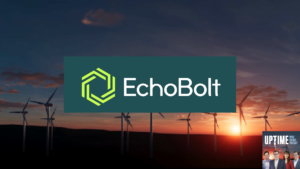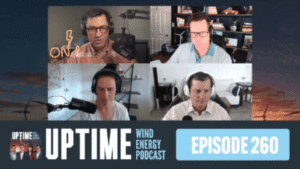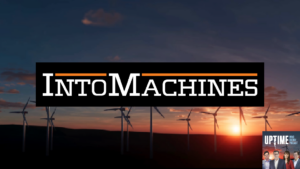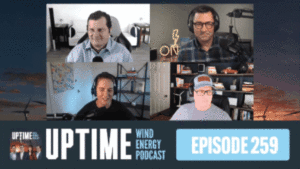Podcast: Play in new window | Download
This week on News Flash, we discuss CIP and AMPIN Energy Transition’s $300 million investment in Indian renewables, Enel investing €38 billion in grid and renewables through 2027, and the Long Beach Harbor’s $14 million match for their upcoming state grant.
Sign up now for Uptime Tech News, our weekly email update on all things wind technology. This episode is sponsored by Weather Guard Lightning Tech. Learn more about Weather Guard’s StrikeTape Wind Turbine LPS retrofit. Follow the show on Facebook, YouTube, Twitter, Linkedin and visit Weather Guard on the web. And subscribe to Rosemary Barnes’ YouTube channel here. Have a question we can answer on the show? Email us!
Pardalote Consulting – https://www.pardaloteconsulting.com
Weather Guard Lightning Tech – www.weatherguardwind.com
Intelstor – https://www.intelstor.com
Join us at The Wind Energy O&M Australia Conference – https://www.windaustralia.com
Welcome to Uptime News Flash. Industry news lightning fast. Your hosts, Allen Hall, Joel Saxum, and Phil Totaro discuss the latest deals, mergers, and alliances that will shape the future of wind power. News Flash is brought to you by IntelStor. For market intelligence that generates revenue, visit www. intelstore. com.
Allen Hall: Copenhagen Infrastructure Partners and Ampen Energy Transition are investing 300 million in joint equity for Indian renewables. The partnership will enable approximately 2 gigawatts of renewable energy projects across India. Their combined portfolio will include solar, wind, hybrid and storage technologies.
Now, this new deal creates massive 2. 7 to 3 billion dollars of renewable energy assets as a base in India. Now, Phil, India is a huge market at the minute, and a lot of renewable projects are moving towards India. This is another one by CIP.
Philip Totaro: Yeah, and it’s, it’s fascinating because, as you mentioned, the, the market’s really seeing an uptick in wind and hybrid projects, and this is exactly where CIP wants to be able to park themselves with this partnership.
So putting the capital behind a local developer and independent power producer that’s, had a track record of success is good for both parties but they’re capitalizing on it at a time when you know, India’s likely to add a, something like 80 gigawatts of renewables over the next, like, five years or six years alone.
Which is a massive amount. And again, they’ve had, big pipe dreams and, and big pipelines in, in India for a long time. But they seem to be getting serious about it, especially when companies start, plowing more and more money into the market and starting to unlock a lot more repowering opportunities in India, where they’ve gotten their policies all kind of squared away at the state level to, to start doing a lot more project repowering and also their transmission infrastructure which they also recognize they’re going to have to heavily invest in to be able to, to get all these renewable projects on their grid.
So, they’re, they’re really starting to push hard, in, in India they’ve, they’ve, like I said, have pretty big pretty big ambitions to be able to add a lot of gigawatts here in the coming years.
Joel Saxum: I’d like to see CIP’s kind of strategy play out wherever you see an emerging market.
They’re there. They’re in every offshore play. They’re in a lot of, like in, in, I’m not saying India is an emerging market. It’s a very dynamic market right now. A lot of players moving and grooving people in, people out, but there’s one thing they have a big renewable energy goals and there’s a lot of money coming in there.
So CIP, you’re seeing them. They’ve been in, they’ve been in country in India since 2021. Not only with Ampen, but with Vivid, Vivid or Vivid as well. So they’ve been in that market for a little while. And as Allen and I know, working in India, the Indian market, it’s nice to have a local compadre there to kind of guide what you’re going to do to safeguard your assets too.
So, good look on them and I can see CIP doing more and more of this.
Allen Hall: In our second story, Italian utility giant Enel will invest 38 billion euros in grids and renewables through 2027. The company is allocating 75 percent of investments to European business operations. And they’re committing about 26 billion euros to great investments, primarily in Italy and Spain.
Now, Phil, you don’t think of Enel as being that financially rich at the moment. It seems like a lot of energy companies and renewables have narrow margins, but Enel does seem to have The wherewithal to do some really big projects at the moment.
Philip Totaro: Well, between the credibility that they have, plus their balance sheet, and their, their projecting, growth up to, around 24 and a half billion euros by 2027 in terms of their, their EBITDA and net income of about seven and a half.
So what’s kind of fascinating about this is they, they do a lot of turnover already from their conventional utilities business, and they’ve been heavily invested in solar up to this point which has made them a, a decent return. Keep in mind that Enel, also encompasses Endesa over in Spain and they have, asset holdings, and I want to say 39 or 40 different countries around the world.
And a, and a good sized portfolio of renewables, but it’s, it’s good to see them that they, they want to keep pushing, particularly with the, the grid infrastructure, because as we’ve talked about, I don’t know how many times, that’s really what’s going to unlock a lot of renewables investments.
Joel Saxum: What I like to see here in the press release that NL put out is seizing on brownfield opportunities. What we know about a lot of the European fleet of wind specifically is that it’s aging, right? They’re coming to end of life soon. So there’s going to be an opportunity for repowers, an opportunity for lifetime extensions and a lot of these assets probably coming up on the open market for sale, because there’s a, there’s a complete market there of buy an aging asset, refurbish it, get it up to run.
And then. Run it for years or sell it again. So you can see and I’ll make some moves there as well.
Allen Hall: Over in the United States, the Long Beach Harbor Commission will match 14 million dollars for an upcoming state grant. The project includes a massive 400 acre wind turbine terminal at the port of Long Beach and when it’s complete, it’ll be the largest offshore wind facility of its kind in the United States.
Phil, in the outcome of the presidential elections you would think that California would slow down on offshore wind, but they’re going full steam ahead. Well,
Philip Totaro: and keep in mind that this Pure Wind Project also was able to secure around 475 million through one of our state ballot initiatives out here, Prop 4 which is gonna raise a few taxes and, and things like that.
What else is new in California? But at least give them some money to be able to put towards constructing this 4. 7 billion and that’s still a pretty steep price tag, but 4. 7 billion offshore wind terminal out here. And certainly the, the, if they do it and they can pull this off it’ll, it’ll be good for offshore wind in California, certainly, and, and elsewhere on the West Coast but there’s a long way to go because if, they’re only getting the money together to do about 10 percent of what they need, and they’re, it’s theoretically relying on the federal government for the rest of it.
They may be out in the cold for the next four years waiting for some additional funding. Good, good on them to, to see the progress they’ve made up till up till this point and, and getting this extra money to do the design studies and the, the, the front end design work that they’re gonna have to do for the port and terminal is, is good.
Amongst the
Joel Saxum: three of us, we talked earlier today about the speed at which the Chinese have grown in their offshore wind space. I think Allen, the number you said was 39 gigawatts deployed as of now. The, one of the reasons that they’re able to do that is they have existing port facilities.
They have existing, an existing ship building community. They have all of the things that you need. To do stuff offshore quickly. Let alone, of course, their permit and permitting and regulatory environment is a lot different than ours, but you’re seeing that the groundwork is being laid here way ahead of time, right?
So we’re, we’re talking, we’re, we’re not going to see a turbine in the water until 2030, 2032 in California. And if you’re learning anything from what happened on the East coast, as we’re. Developing farms. We have a couple already going right now and we’re still fighting for port facilities on the east coast.
You can see, learn those lessons and see what the difference is between us and other, nations that are doing the same chase. But they’re gonna have to get on this thing now because even though it is six or eight years before we see steel in the water there, they’re gonna need to start working on facilities ASAP.



